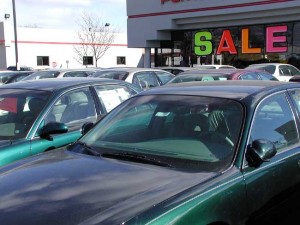Americans bought nearly 39 million used vehicles in 2011, more than three times the number of new cars, trucks and crossovers sold last year.
But with demand threatening to outstrip supply – especially for “nearly new” vehicles – buyers saw prices rise sharply, a trend likely to continue through 2012, according to CNW Marketing.
“We saw a lot of people whose existing cars were just tired so, after two years of pent-up demand, that finally led to a surge of used car sales last year, and especially in November and December,” said CNW chief Art Spinella.
Used vehicle sales totaled 38,792.169 for all of 2011, according to CNW research, up 5.2% from the prior year. December volume surged 11.98%, to 3,142,513.
The year, as a whole saw a surge in private party, or consumer-to-consumer, sales, especially in the final months of 2011. Shoppers and sellers have increasingly turned to free online services such as Craigslist.org to make the connection, along with fee-based services such as AutoTrader.com.
Dealers have also been using the Internet to boost their business, and according to CNW, December saw 73.1% of available used cars listed online compared to 69% a year earlier.
Since the economic recession began in 2008, there has been a notable shift in the marketplace, many traditional new car buyers migrating to the used vehicle market, according to Spinella. Even as the economy – and, in turn, the new car market – has begun to recover, many are still opting for previously owned products.
That reflects the emphasis on value, higher prices for new cars and limited credit availability.
Spinella noted a “new phenomenon we’ve only since about 2008 (where) a lot of buyers who would normally choose a new car are going for what we call “transitional used cars.” These are vehicles they expect to keep only until their personal financial situation improves and they can get back into a new car, he explained.
But there’s a problem for such buyers. In years past, they might have opted for what the industry likes to call “nearly new” vehicles – cars that have just come off short-term, 1, 2 or 3-year leases and are in near-new condition, often backed by like-new warranties.
But because most lenders cut down on leases in recent years – many halting leasing entirely – there are far fewer of these vehicles available right now. That has helped drive up prices on used cars overall, and relatively new models in particular.
During much of 2011, used car prices hit record levels. They dipped about 1% in December, but Americans still spent about $28.2 billion on used vehicles last month, up from $25.6 billion a year earlier.
“And that trend will certainly continue,” predicted Spinella, though, on the positive side, he noted that many lenders are beginning to loosen up credit again for used car customers.

